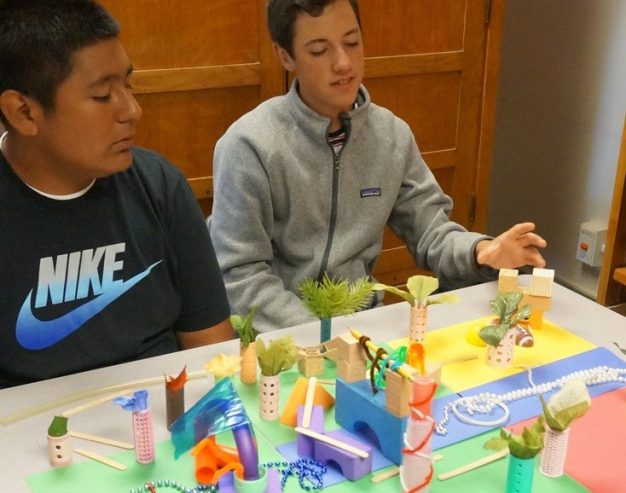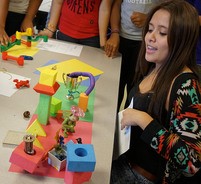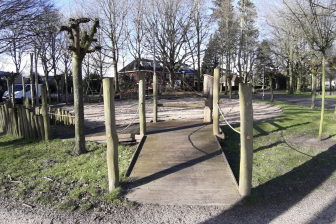
The power of play in planning with immigrants
In this interview with urban planner, James Rojas, he describes his approach to engaging immigrant communities through the power of creativity and imagination.
In 2013, an estimated 200 million people migrated to a new home in a foreign country (Migration Policy Institute 2016). While many immigrant communities have been able to advocate for their needs and rights (Corburn, 2009; Nicholls and Vermeulen, 2012), James Rojas has found that many recent migrant communities do not feel comfortable in an advocacy role. Thus, Nicholls and Vermeulen’s (2012) conception of immigrant rights, as accessed through the city, applies to some, but not all, immigrant populations. How to effectively engage immigrant communities thus becomes a critical aspect of urban planning.
James Rojas has spent his career as an urban planner developing the City as Play method for public engagement (Kim 2015). His organization, Place It! is using art to transform the way that people experience city planning, by tapping into their creativity and emotions. Rojas has found that no matter the country, city, or culture, the desires we had as children are often shared and are relevant to what we need from the planning of our public spaces.
By taking advantage of this common ground, Rojas’ City as Play method gives voice to immigrants and refugees who often are not a part of the standard urban planning processes. Growing Up Boulder has effectively employed Rojas’ method with a variety of ages of children and often finds that effectively engaging immigrant children also means engaging their families.
Below are extracts of an interview with James Rojas, about his approach to engaging immigrant communities, conducted by Sarah Bartosh, an Environmental Design student at the University of Colorado.
Bartosh: Why did you start Place It! And what is your approach to public engagement?
Rojas: Place It! was started to get more people engaged in the city planning process and to make it more interesting. Most planning is not very engaging for people. Planning is run more like an office building, as opposed to a place where people actually live. When I was in Los Angeles, I went to an art gallery and was amazed by how engaged people were with the art, and I thought “How can we as planners do the same thing?” How can we take this idea and develop it into a creative agency into the environment. I want to get people excited about engagement. I work with their emotions and creativity in a very playful way.
Bartosh: What types of planning have worked best with your types of public engagement?
Rojas: Really, all types of planning work best with this form of engagement. Right now, planning is so bureaucratic and legal, so once you insert some kind of creative agency, it makes the process itself more interesting. It’s really a great way to establish a way for people to reflect on space, because how can you start planning without knowing what you need to do? And through play, people can really explore what they want from space.
When kid’s play, they learn about the world. When you get a community to conceive their ideal environment, you learn about the spaces that they value. By communicating through forms and space rather than just words, you can capture all facets of human life in a planning meeting.
Bartosh: When working with immigrant communities, do you alternate your engagement methods? If so, how so?
Rojas: From my experience with immigrants, they are not used to talking about themselves and the places that they like. What I ask them to do is to build their favorite childhood memory. By doing this, I am validating their experiences. Everyone has a childhood memory that they tap into, making everyone more equal and a lot more satisfied. By doing this, they can realize that they are a part of the planning process. It is important to understand that we all have something to offer, whether you’re here for years or just a day.
Bartosh: Would you say that this approach is something that can be universally adopted by cities and urban planners? If not, do you believe that there is an approach that can be utilized by cities all over the world to make refugees’ voices better heard in the planning process?
Rojas: Yes, I do believe that this is something that can be used all over the world. By engaging citizens through play, it helps them understand the world around them. We know that we may all have different cultures growing up, but as children, we go through the same – or equivalent –experiences. There is less of a difference between us when we were children. Whether we come from Guatemala or India, it is amazing how similar we were. We need to use the core values that we had a children as a way to bring everyone together.
The desires that we have as kids are the same ones that we have now: nature; people around us; and an empathy with the spaces we are given. Once people understand that we do have the same things in common, we have a starting point. This makes everyone feel equal, no matter where they come from. Once that happens, then this method can really be effective.

Authors: Sarah Bartosh and Victoria Derr
Photo Credits: Bodie Hultin
References:
Corburn, Jason. Toward the healthy city: people, places, and the politics of urban planning. MIT Press, 2009.
Kim, Sojin. 2015. On Fences, Plazas and Latino Urbanism: A Conversation with James Rojas. Migration Stories. Smithsonian Center for Folklife and Cultural Heritage. Accessed on January 31, 2016 from http://www.folklife.si.edu/talkstory/2015/on-fences-plazas-and-latino-urbanism-a-conversation-with-james-rojas/.
Migration Policy Institute. 2016. International Migration Statistics, 1960-2013. Accessed on January 31, 2016 from http://www.migrationpolicy.org/programs/data-hub/international-migration-statistics.
Nicholls, Walter, and Floris Vermeulen. “Rights through the City: The Urban Basis of Immigrant Rights Struggles in Amsterdam and Paris.” Remaking Urban Citizenship: Organizations, Institutions, and the Right to the City 10 (2012): 79.



